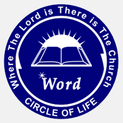Who is Emanuel Swedenborg?
|
Emanuel Swedenborg was born in Stockholm Sweden on the 29th of January, 1688. During the course of his life, Swedenborg would become a scientist, inventor, mining engineer, anatomist, mathematician, astronomer, cosmologist, geologist, chemist, paleontologist, philosopher, and finally, a theologian and religious reformer.
Emanuel was born to Sara (Behm) and Jesper Swedberg. His father was the Lutheran Bishop of Skara, Sweden at the time. After the family was ennobled by Queen Ulrika Eleonora of Sweden in 1719, they took the name of 'Swedenborg'. At the age of eleven, Swedenborg began his studies at the University of Uppsala in Sweden, where classes were taught exclusively in Latin. In his scientific works, Swedenborg not only anticipated much that is significant in modern science, but his writings in philosophy and psychology also encompass important contributions to those fields. In 1743, at the age of fifty-five, Emanuel Swedenborg turned from his purely scientific and philosophical pursuits to spirituality alone, with the Bible as his only textbook. During this final part of his worldly life, Swedenborg published eighteen theological works in Latin, in addition to writing many unpublished works. Swedenborg’s best known theological work is titled Heaven and Hell. In this text, he describes the afterlife in great detail. On the title page of his last published theological work, The True Christian Religion, Swedenborg describes himself as a "Servant of the Lord Jesus Christ." Emanuel Swedenborg died at the age of 84 in London on March 29th, 1772 after having completed 48 works on spiritual subjects. |
This video is a product of the
Swedenborg Foundation Additional Resources |
Emanuel Swedenborg Chronology (From "The Essential Swedenborg" by Sig Synnestvedt)
1688 |
Emanuel Swedenborg born in Stockholm, Sweden, on January 29. |
1699-1709 |
Emanuel Swedenborg attended Uppsala University. |
1710-1715 |
First journey abroad, to England and the Continent. |
1716 |
First publications by Emanuel Swedenborg in the magazine Daedalus. Emanuel Swedenborg appointed Assessor in the Royal College of Mines. |
1718 |
Ennoblement of Swedberg family with name changed to Swedenborg. Assumption by Emanuel Swedenborg of seat in House of Nobles of Swedish Diet. |
1720 |
Publication of Emanuel Swedenborg’s first book, a philosophic work titled Principles of Chemistry. |
1729-1734 |
Writing and publication of Emanuel Swedenborg's most important philosophical works in three volumes, titled Philosophical and Mineralogical Works. |
1735-1744 |
Period of intensive study, writing, and publication on the nature of human existence, particularly as regards the concept of the soul. |
1743-1744 |
First transcendent experiences, visions or dreams, in Holland and England. |
1745 |
"Call" to become a revelator, London, England. |
1747 |
Resignation from the Swedish Board of Mines to allow time for theological writing. |
1747-1758 |
Writing and publication of the twelve-volume Arcana Coelestia, - Emanuel Swedenborg’s first major theological work. During this time he also wrote Heaven and Hell. |
1759-1763 |
Incidents of the Stockholm fire, the Dutch ambassador’s receipt, and the Queen’s secret illustrating Emanuel Swedenborg’s clairvoyance. Swedenborg wrote Apocalypse Explained, Divine Love and Wisdom, Doctrine of Life, Doctrine of the Lord, Doctrine of the Sacred Scriptures, and Doctrine of Faith. |
1764-1767 |
|
1768-1771 |
Heresy trial at Gothenburg, Sweden, involving state church accusations against Emanuel Swedenborg’s theology. Swedenborg wrote Conjugial (Marriage) Love and True Christian Religion. |
1771-1772 |
Publication of the two-volume True Christian Religion in Amsterdam, Holland, Emanuel Swedenborg’s last major theological work. |
1772 |
Death in London, England, at age 84, on March 29. |
